Type I seaports are particularly important seaports, serving mainly for the socio-economic development of the country or interregional. So, knowing Type I Vietnam seaports will help investors make the right choices for their strategies. Along with Nam Dinh Vu to follow the article List of nationally significant ports in Vietnam (Type 1) below:
1. Ho Chi Minh Port
Ho Chi Minh Port is a national major port and a hub in the region (Type I) including the following parts:
– Hiep Phuoc Port on Soai Rap stream, a general and concentrated port that fills in as a substitute for existing ports on Soai Rap waterway and a center for delivery fares to Mekong Delta district, equipped for getting ships up to 5,000 DWT, holder boats of 4,000 TEU;
– Cat Lai Port (on Dong Nai stream), a principle holder port in the prompt term, equipped for getting ships from 20,000 to 30,000 DWT or over (load diminished)
– Ports on the streams of Saigon, Nha Be will be migrated and practically changed over under Decision No. 791/Qđ-TTG dated August 12, 2005. Part of a wharf in Khanh Hoi will be utilized as an inland traveler terminal and sea administration focus. Ports on Nha Be stream will be redesigned and overhauled without development for ships up to 30,000 DWT;
Ho Chi Minh (Sai Gon) seaport is a system of ports in HCM City including Tan Cang Cat Lai, Cai Mep, and Hiep Phuoc. It is the gateway of the southern region for trans shipment and import-export activities.
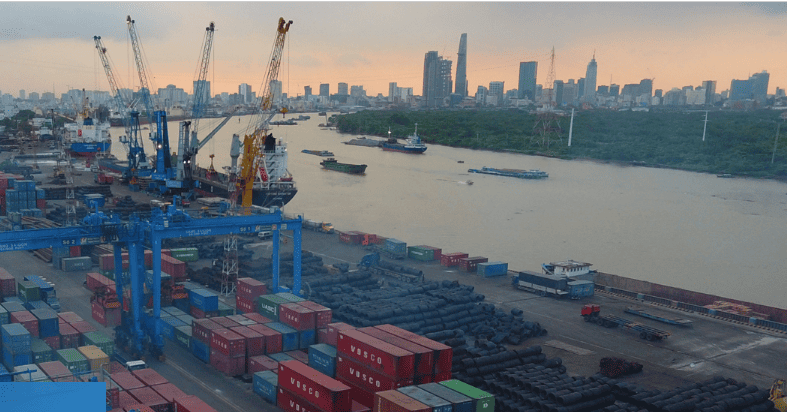
2. Da Nang Port
Da Nang Port is a national general port in the region (Type I), which can be developed in the long–term to serve as an international gateway in the central region (Type IA), including the following parts:
– Tien Sa Port, a general and compartment port, that serves Da Nang City, part of the northwestern high countries and travel products from Laos, northeast of Thailand; gets ships from 30,000 to 50,000 DWT, holder delivers up to 4,000 TEU, global traveler boats of 100,000 GT over with simultaneous and best in class ports;
– Tho Quang Port, an overall port, that gets ships from 10,000 to 20,000 DWT; has a particular port for ships from 1,000 to 5,000 DWT; A coordinations zone in Cau Trang Stream in blend with the existing coordinations zone ought to be built to fill in as a merchandise dissemination community for Tien Sa and Tho Quang Ports;
– Lien Chieu Port predominantly handles mass load and fluid freight serving mechanical and administration offices here the prompt term; In the long haul (after 2020), it will be continuously evolved to fill in as a principal port of the global entryway port in Central locale (in case conditions are fulfilled) getting boats of 100,000 DWT, compartment ships from 6,000 to 8,000 TEU;
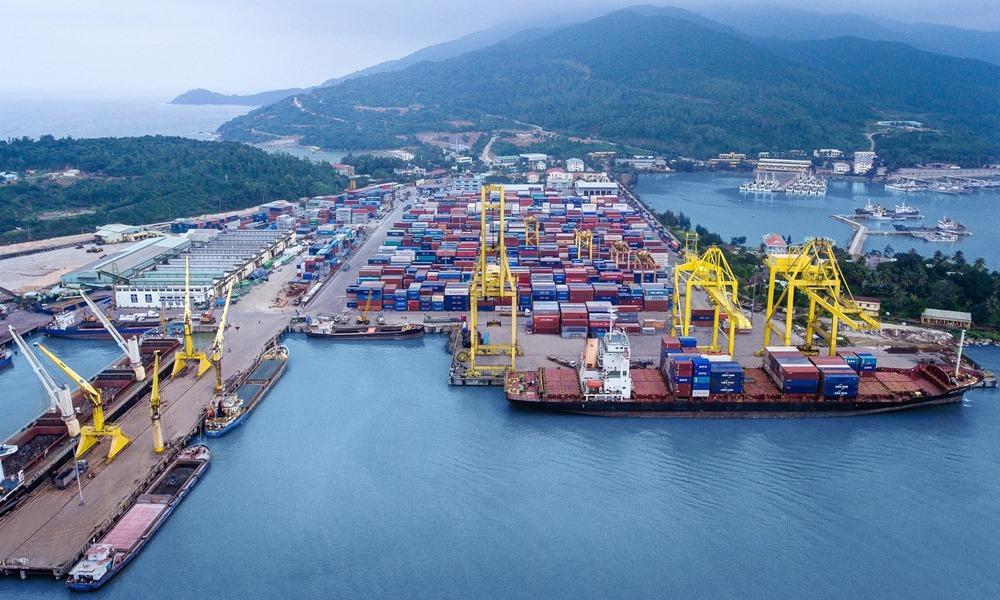
3. Quy Nhon Port
Quy Nhon Port (Binh Dinh) is a national major port in the region (Type I) including:
– The port of Quy Nhon – Thi Nai, a general and container port, which receives ships of 10,000 to 30,000 DWT and has a specialized port for ship from 5,000 to 7,000 DWT;
– The port of Nhon Hoi, a potential port for further development, mainly serving large-scale industrial and service facilities that are expected to take shape here; receives ships from 10,000 to 50,000 DWT; The scale and development process must meet market demands, investors’ capital mobilization capacity.
– Local satellite ports are developed in Dong Da, De Gi, and Tam Quan, Quy Nhon Port.
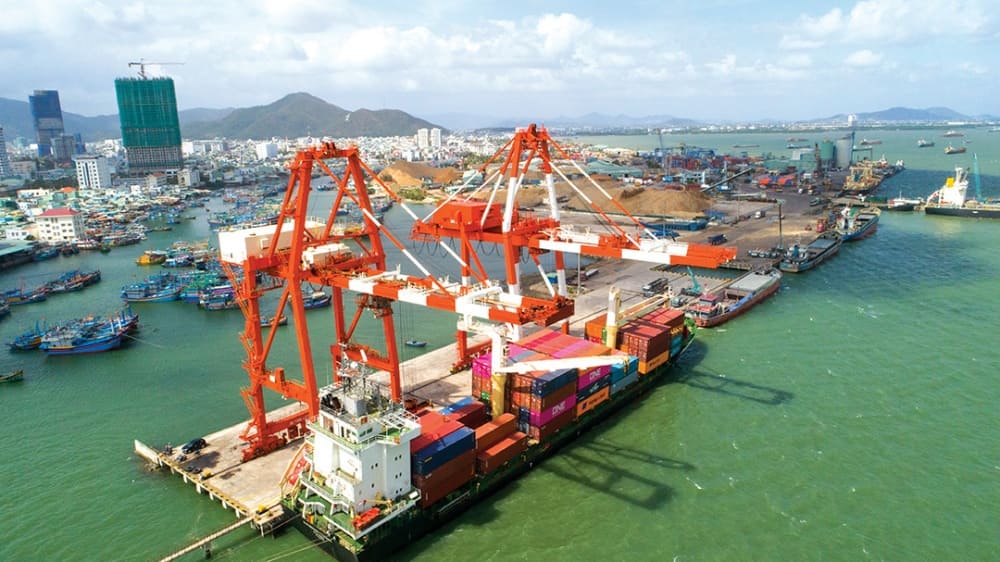
4. Quang Ninh Port
Quang Ninh Port is a national major port in the region (Type I) including:
– Cai Lan Port is the principal port that chiefly handles general and holder payload from ships up to 50,000 DWT and compartment sends up to 4,000 TEU; Focus should be set on this port alongside coordination focuses and traffic network behind ports in the quick-term of the arranging;
– Cam Pha Port is a particular port that handles general payload and holders, gets ships from 50,000 to 70,000 DWT at compartment and 100,000 DWT at parcel region. Ports of Nam Cau Trang are satellite ports. Just a serious venture is required without development to finish development of an oil port for 20,000 DWT ships at Mong Duong Ward;
– Hai Ha Port, a particular port that straightforwardly serves Hai Ha Industrial Zone and northeastern region; Van Gia Port, a neighborhood general port that chiefly serves Mong Cai designated spot city including a parcel port for boats of up to 10,000 DWT and inland wharves for little vehicles in Dan Tien and wharves on Ka Long River;
– Ports of Mui Chua, Van Hoa, Van Don, neighborhood ports serving ships from 3,000 to 5,000 DWT; Mui Chua port, just planned for mining compound industry alongside broad freight for Cao Bang, Lang Son. Van Hoa port mostly serves public protection and security: Van Don Port (upper east of Cai Bau Island) handles general load for a monetary zone and gets dispatches up to 10,000 DWT;
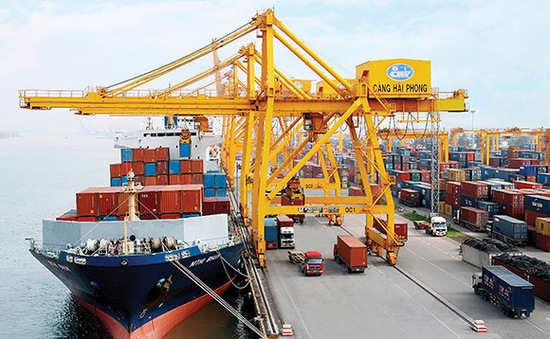
5. Nghi Son Port
Nghi Son Port (Thanh Hoa) is a national major port in the region (Type I) including:
– Port of Bac Nghi Son, a specialized port serving oil refinery complexes, cement plants, and concentrated industrial facilities; receive ships of up to 50,000 DWT; Nam Nghi Son Port, a general port that has a specialized port receiving coal for thermoelectric plants, which serves the construction and repair of ships; capable of receiving general and specialized vessels from 30,000 to 50,000 DWT;
– The port of Dao Me (mainly western waters of the island) is a port that receives crude oil for oil refinery complexes; study and develop a transshipment port to supply coal to coal-fired power plants in the north-central region; receive bulk cargo ships from 100,000 to 200,000 DWT, crude oil ships from 200,000 to 400,000 DWT
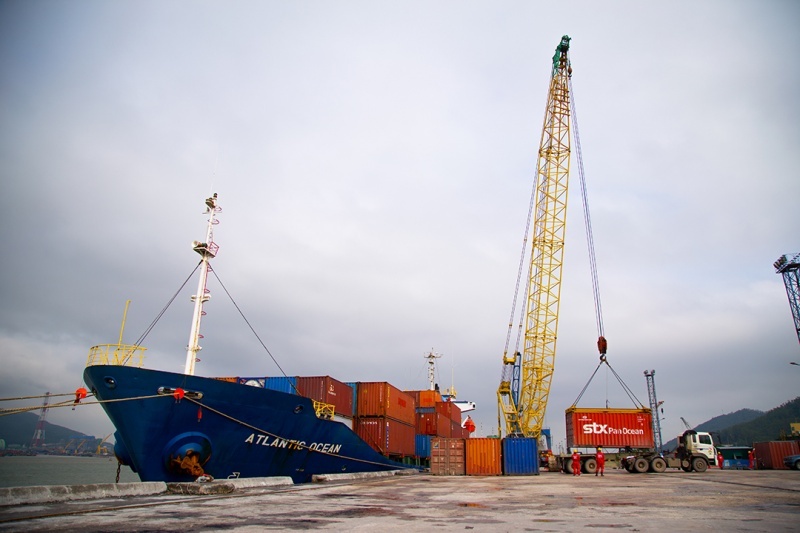
6. Ha Tinh Port
Ha Tinh Port is a national major port and a hub in the region (Type I) including:
– Vung Ang Port as a general port with a specialized port that directly serves Vung An economic zone and maybe a gateway transshipping goods for Laos, northeast of Thailand, capable of receiving ships from 30,000 to 50,000 DWT, container ships of up to 4,000 TEU; the specialized port is employed to import coal from ships from 30,000 to 100,000 DWT within the north and export oil product for 15,000 DWT ships within the south of the overall port;
– Son Duong Port as a specialized port that serves metallurgy, refinery complexes, and other heavy industrial zones; receives ships up to 300,000 DWT transporting coal, ore, crude oil, ships from 30,000 to 50,000 DWT exporting products and other goods for industrial facilities here; Son Duong port features a general and container port to support Vung Ang port (in case of capacity overload); a transshipment port should be studied and developed to import coal as a provisional source to serve thermal power plants within the region;
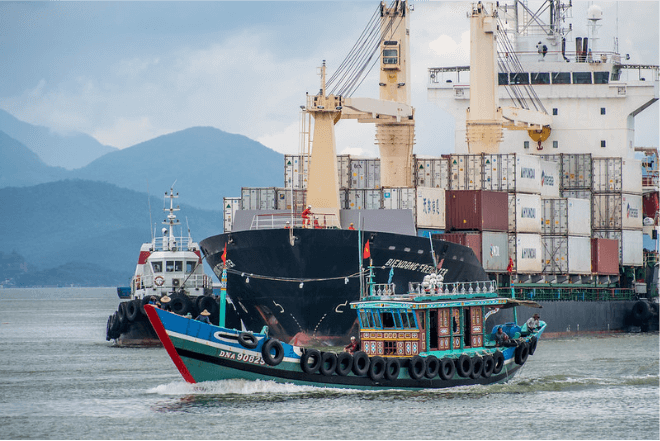
7. Dung Quat Port
Dung Quat Port (Quang Ngai) is a national major port in the region (Type I) including:
– Dung Quat I Port, a general and container port with docks serving ships from 10,000 to 50,000 DWT, container ships of up to 4,000 TEU; with specialized docks for exporting oil products of petroleum refinery complexes, docks serving shipbuilding & repair industry, and specialized dock serving heavy industrial facilities with ships from 20,000 to 150,000 DWT or over (Investors from industrial facilities shall be liable for investing in navigable channels handling ships over 50,000 DWT);
– Dung Quat II Port, a specialized port, that receives ships from 100,000 to 350,000 DWT transporting petroleum, coal, or provide direct service to grease refinery and metallurgy complexes; handles together general and container cargo to support Dung Quat I port serving the event of expanded Dung Quat economic zone within the next phase;
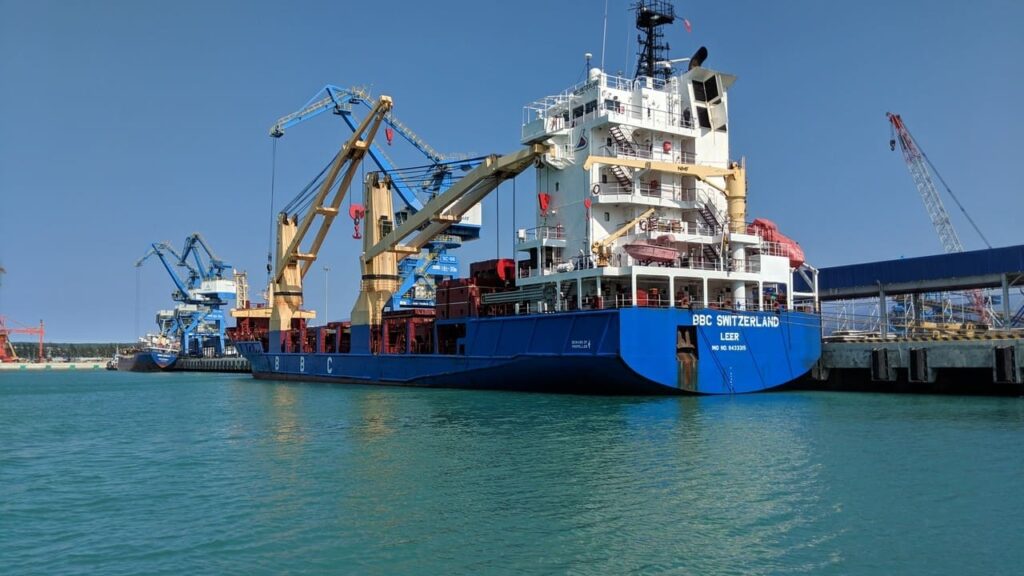
8. Nghe An Port
Nghe An Port is a national major port and a hub in the region (Type I) including:
– Cua Lo Port as an overall port that straightforwardly serves the Southeast financial zone in Nghe An Province and one of the passages transporting travel merchandise for Laos, northeast of Thailand, gets boats of from 10,000 to 20,000 DWT; Development ought to be sped up in the north of Cua Lo for taking care of boats from 30,000 to 50,000 DWT as per requests and cycle of advancement of the monetary zone;
– Dong Hoi Port is a specific port that straightforwardly serves nuclear energy stations, concrete plants, and other concentrated mechanical offices; getting ships from 30,000 to 50,000 DWT;
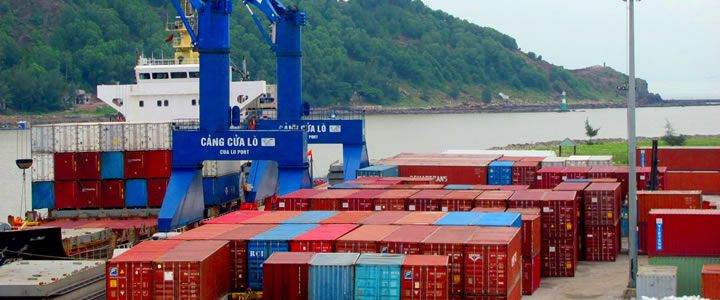
9. Thua Thien Hue Port
Thua Thien Hue Port is a national major port in the region (Type I) including:
– Chan May Port, a general port, that directly serves Chan May industrial zone, transit goods from Laos, northeast of Thailand; features a specialized port serving shipbuilding & repair industry and a port serving international passenger ships; receives ships from 30,000 to 50,000 DWT and passenger ships up to 100,000 GT and more;
– Thuan An Port as an area and satellite general port for ships from 3,000 to 5,000 DWT;
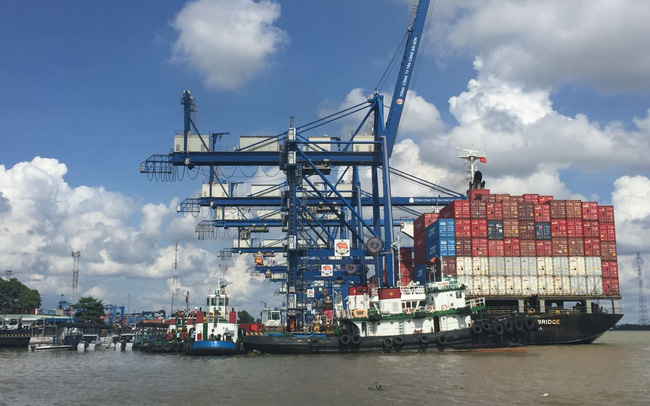
10. Dong Nai Port
Dong Nai Port is a national major port and a hub in the region (Type I) including the following parts:
– Ports of Phuoc An, Go Dau (on Thi Vai river), the main port that mainly handles general and container cargo for ships up to 60,000 DWT in Phuoc An and up to 30,000 DWT in Go Dau; includes several specialized ports serving riverside industrial facilities;
– Ports of Phu Huu, Nhon Trach (on Dong Nai, Nha Be, Long Tau rivers), a specialized port with a variety of general ports handling ships from 10,000 to 30,000 DWT; directly serving urban – industrial zones in Dong Nai and also a brand new development zone for enterprises that have berths, ports on Saigon, Nha Be river relocated; Progress of construction and development must be synchronized with scale and capacity of traffic network after port.
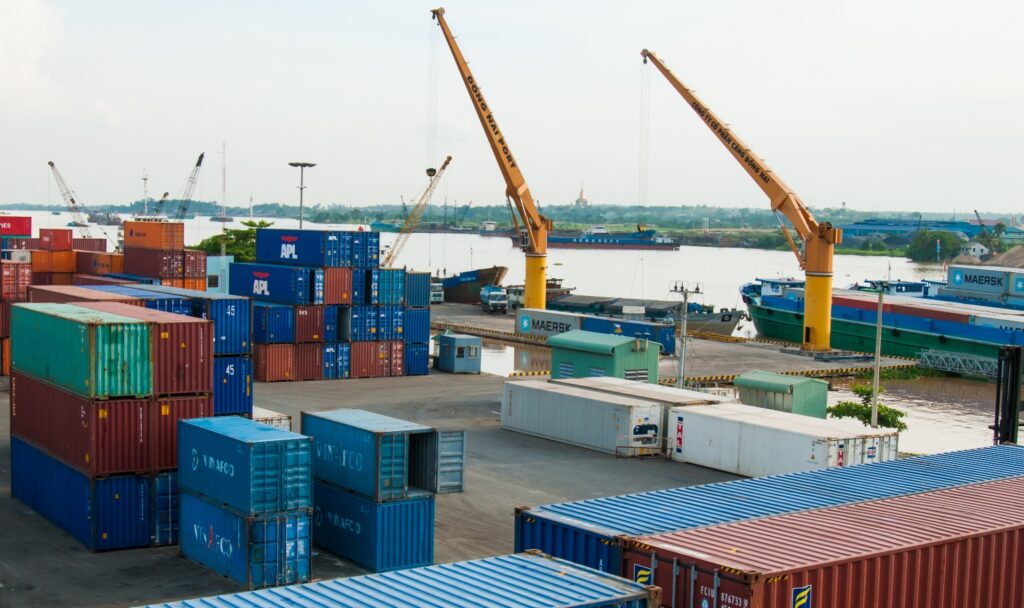
Hai Phong Port (Type 1A)
With an area of 1,519 km2, a coastline of over 125 km, Hai Phong has long been known as the largest seaport in Northern Vietnam, the logistics service center of the country and the ASEAN region, connecting two corridors – a belt of economic cooperation between Vietnam and China. The port city is also an important trade gateway of the northern key economic region. The prime geographical location is one of the reasons why Hai Phong becomes the largest industrial, service, economic, scientific and commercial center in the country.
Hai Phong port currently comprises 5 branches. The port region has 21 wharves with a complete length of 3,567m and a plan profundity from – 7.5m to – 9.4m. The complete space of the holder yard and Tan Vu port branches respectively are 712,110m2 and 3,300 m2 for the CFS distribution center at Chua Ve port.
As the seaport with the biggest traffic volume in the North of Vietnam, Hai Phong Port is fit for getting around 10 million tons/year, of which, Hoang Dieu Port Branch represents almost 60% of the stacking and dumping payload. On the other hand, the biggest vessel can get 40,000 DWT at Lan Ha parcel region and the least with 700 DWT at Bach Dang float.
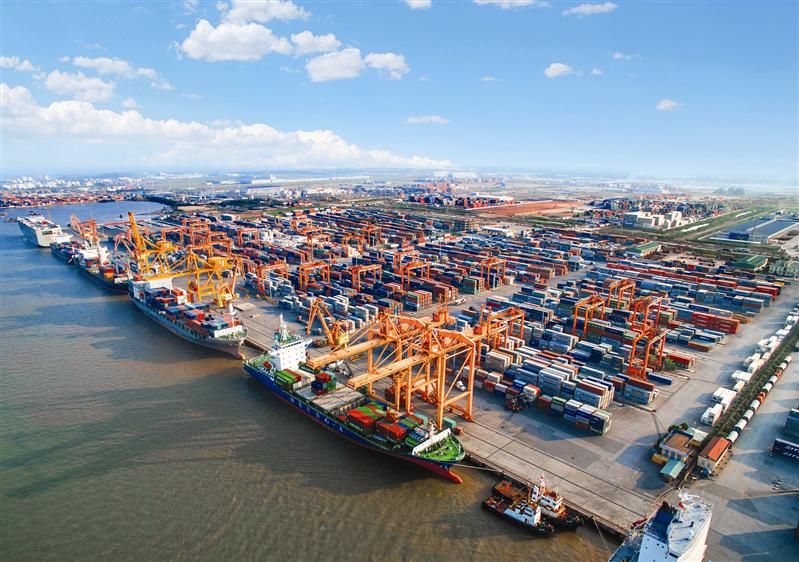
Nam Dinh Vu Port
Nam Dinh Vu port not only stands out with the most favorable location and largest scale but also because of its capacity to accommodate the largest vessels in Dinh Vu area – with ships up to 40,000 DWT. The whole project scale includes 7 container berths, 65 hectares of total area, 1.5 km length of berth, with total investment up to VND 6,000 billion, and total capacity is nearly 2 million TEUs and 3 million tons per year.
Located in the Non-Tariff Zone and Nam Dinh Vu Industrial Park – the most important hub of international and inland commercial goods transportation in the North, right at the mouth of Bach Dang River with deep water draft and wide turning basin. Nam Dinh Vu Port is the nearest gateway to the sea compared to other terminals in Hai Phong.
In addition, Nam Dinh Vu is the only industrial park in Vietnam that owns 4 functional areas for multi-service synthesis. Always put criteria of labor safety, fire protection, and environmental protection on top. Support businesses with useful services at competitive costs.
